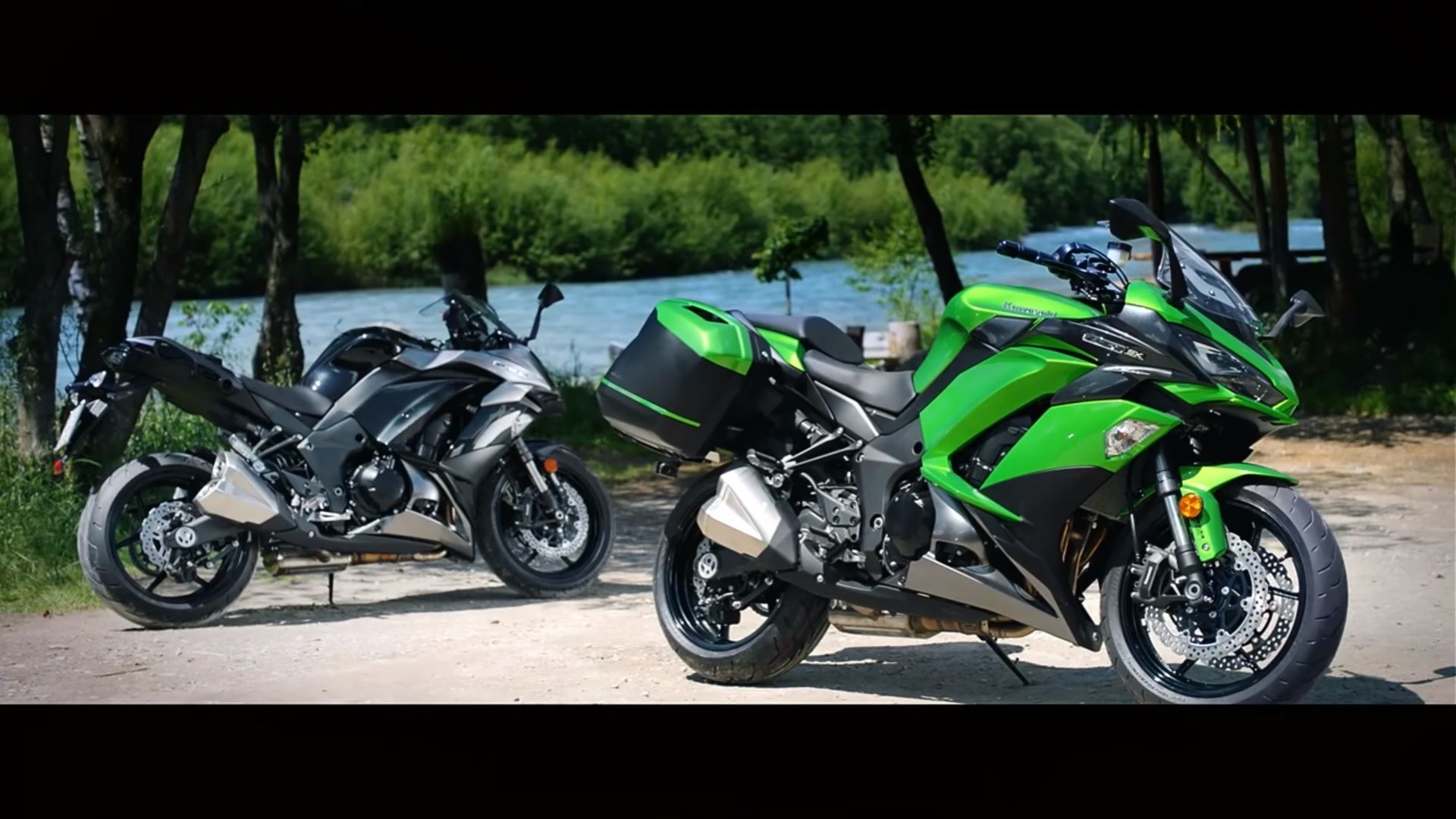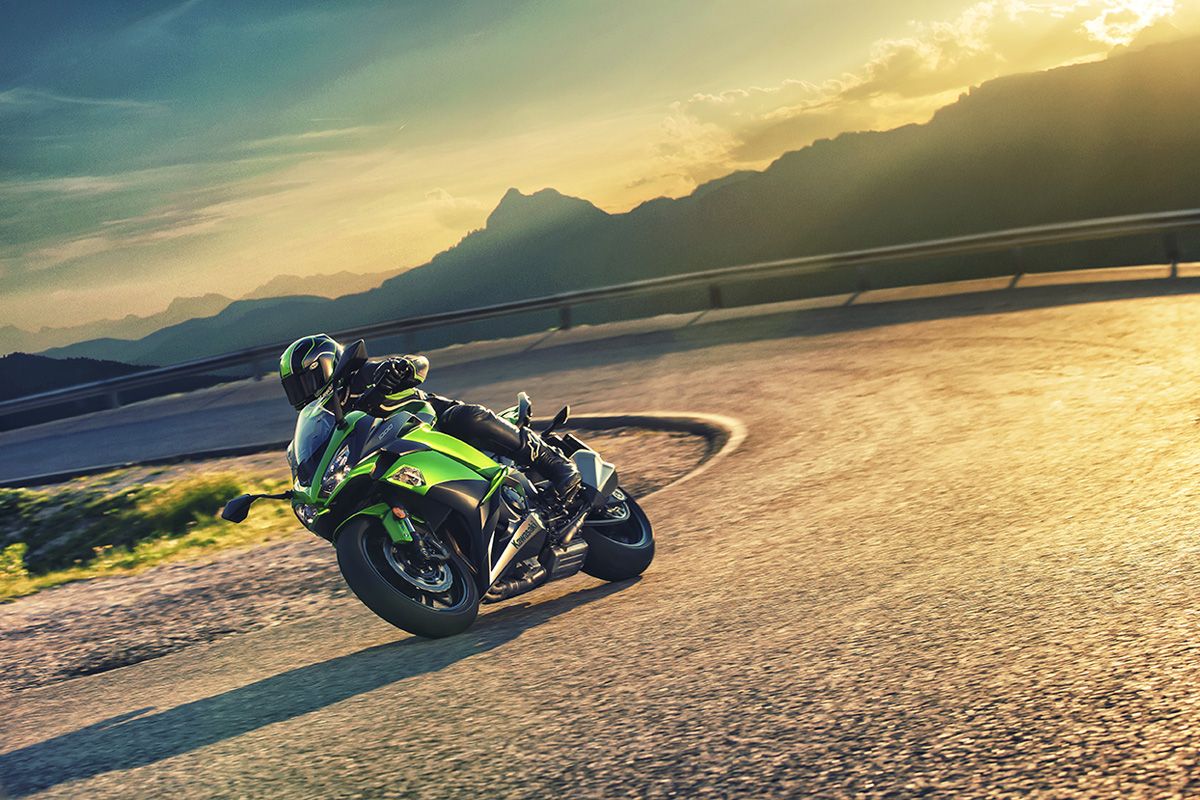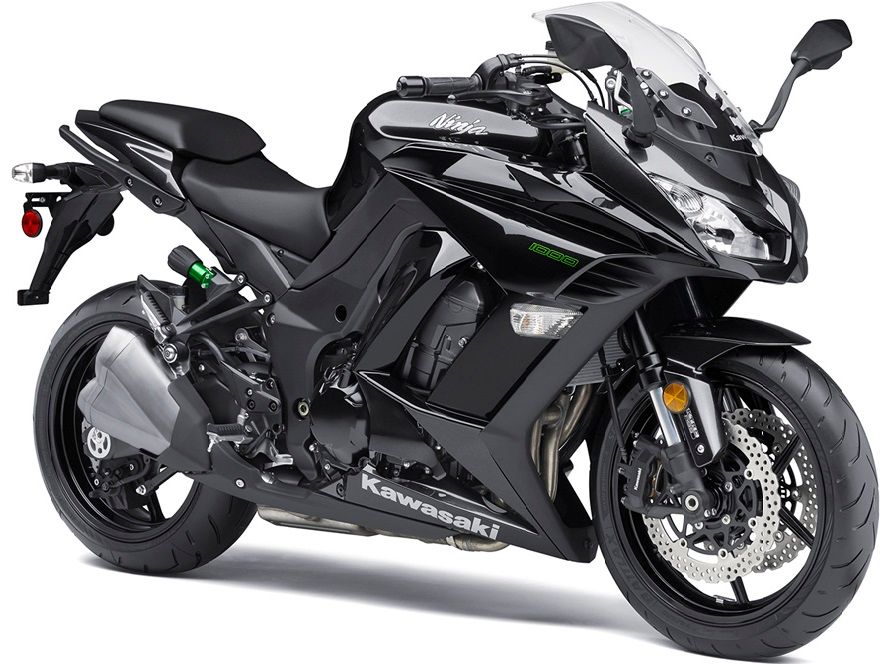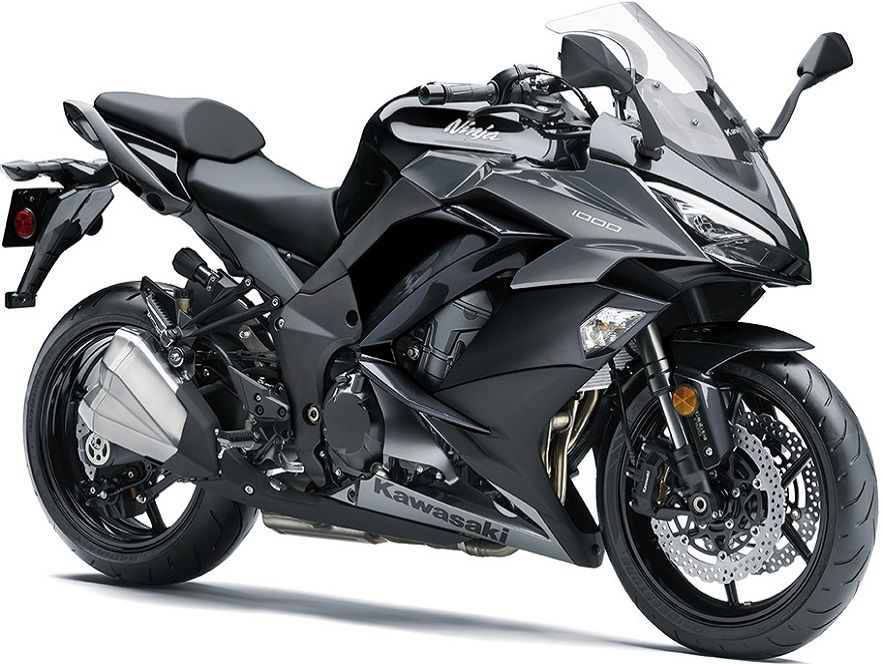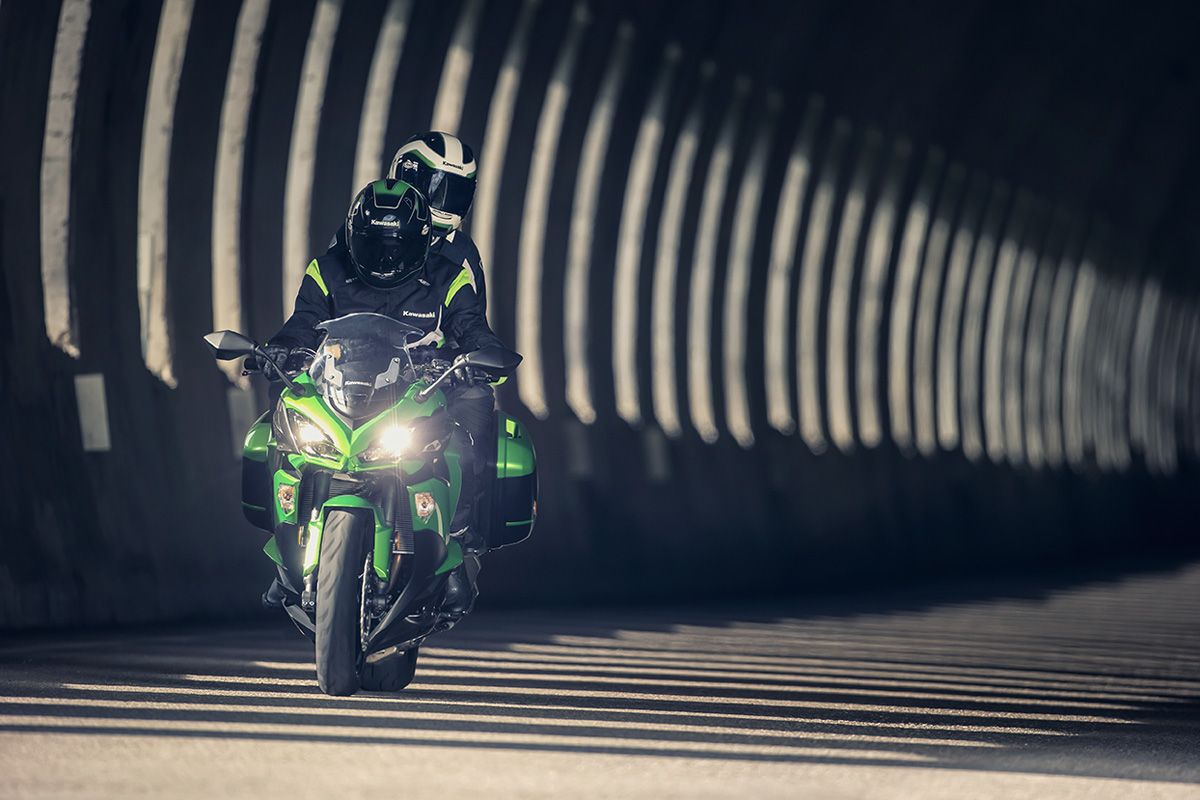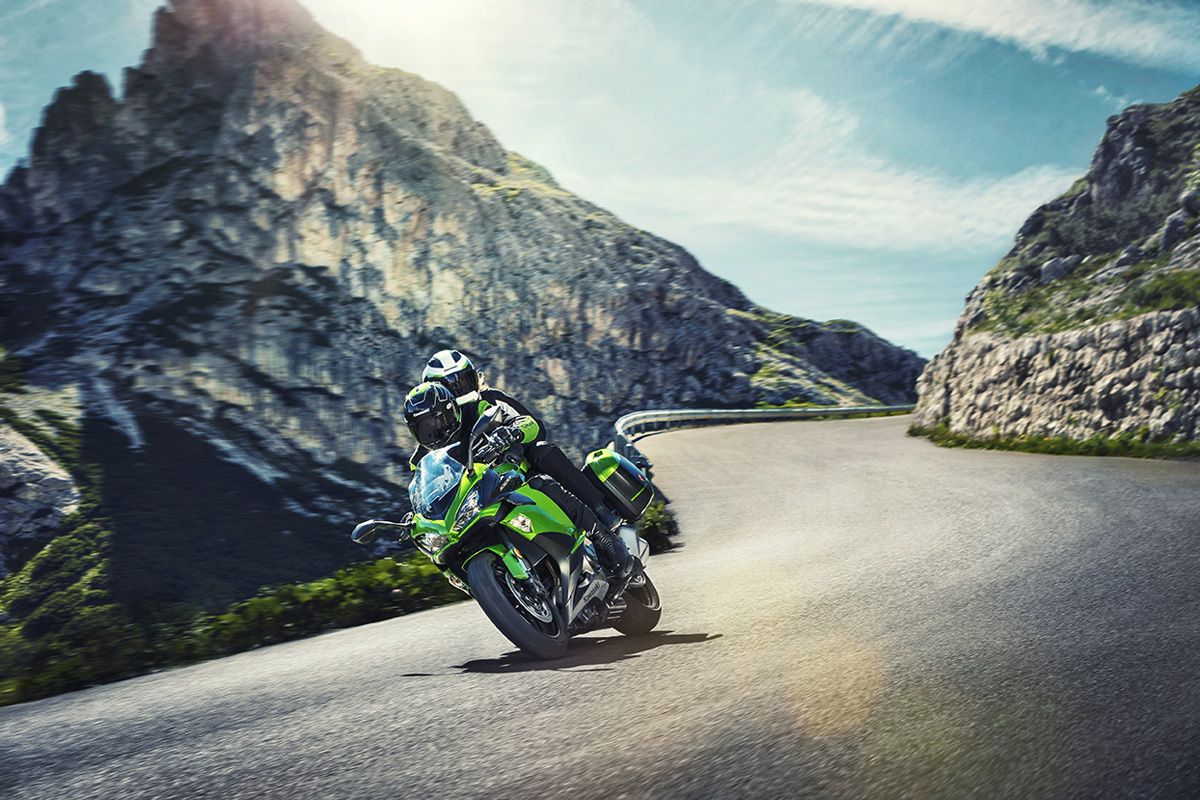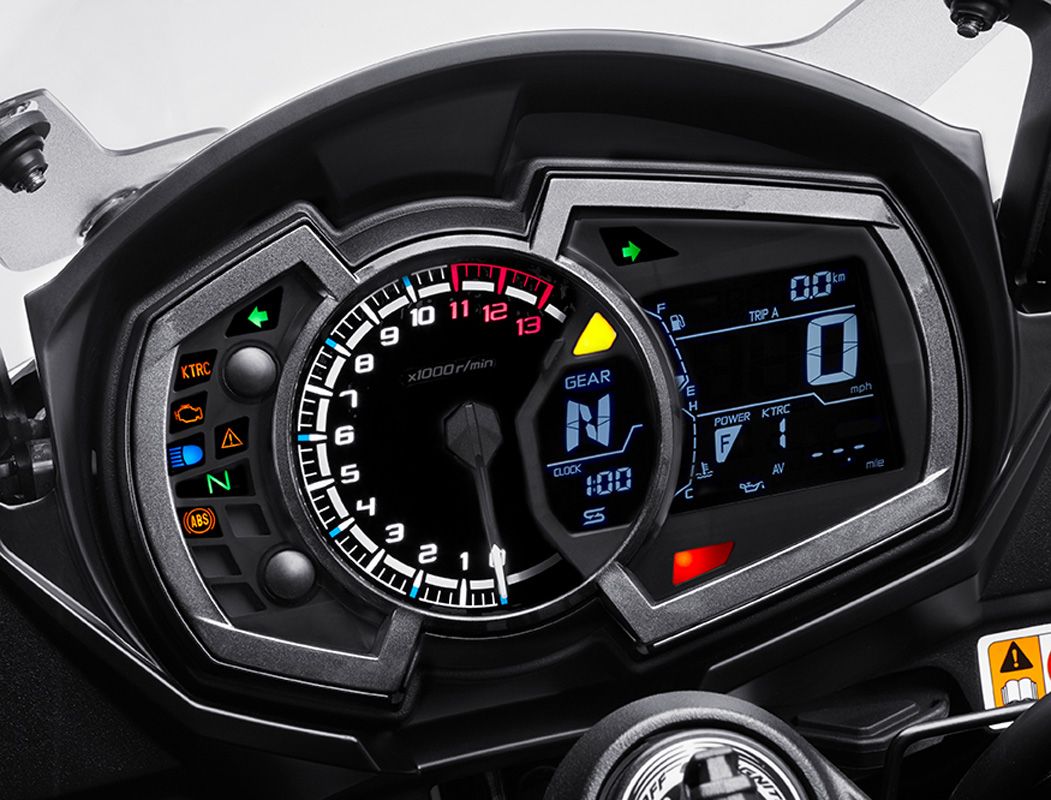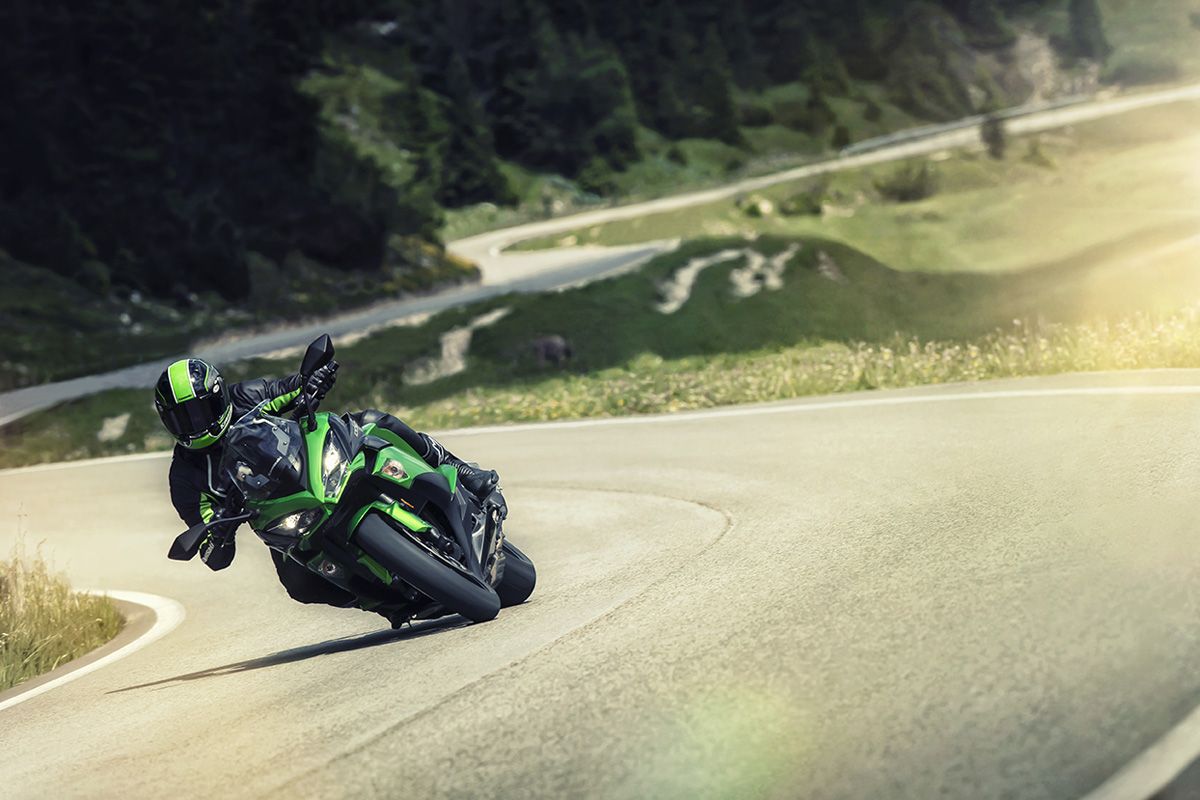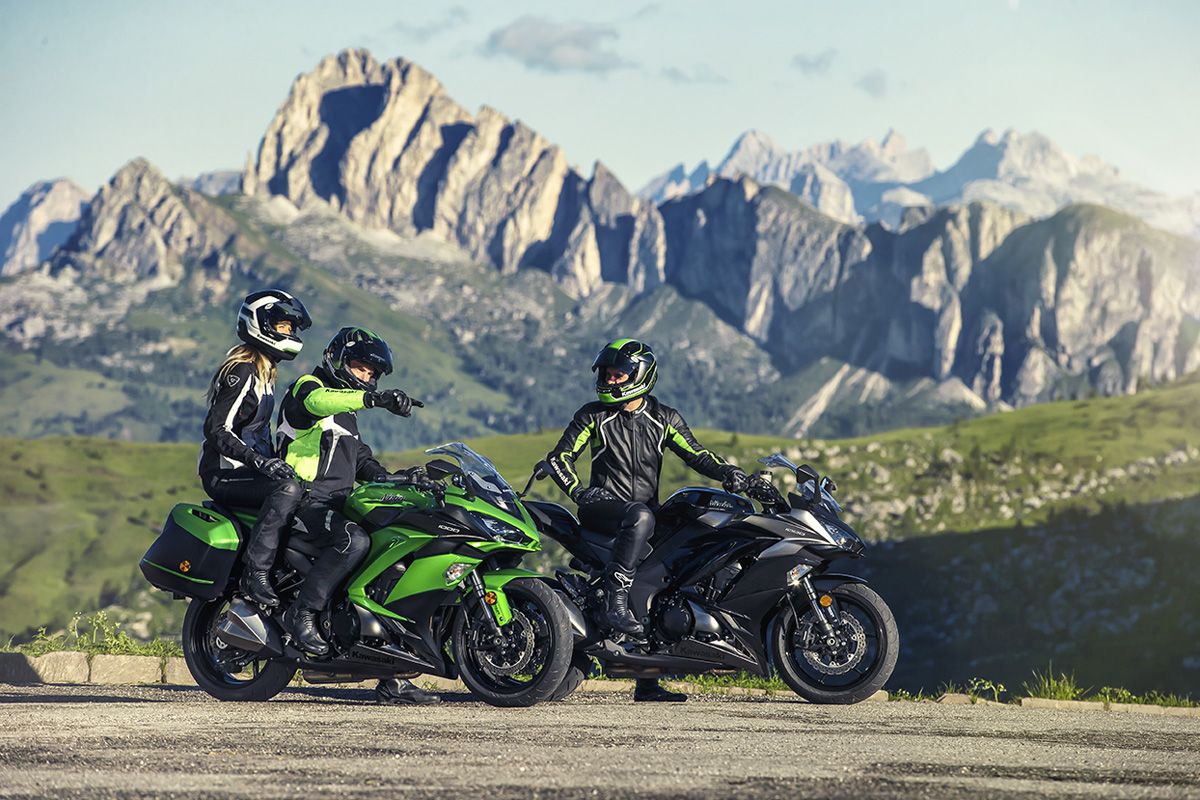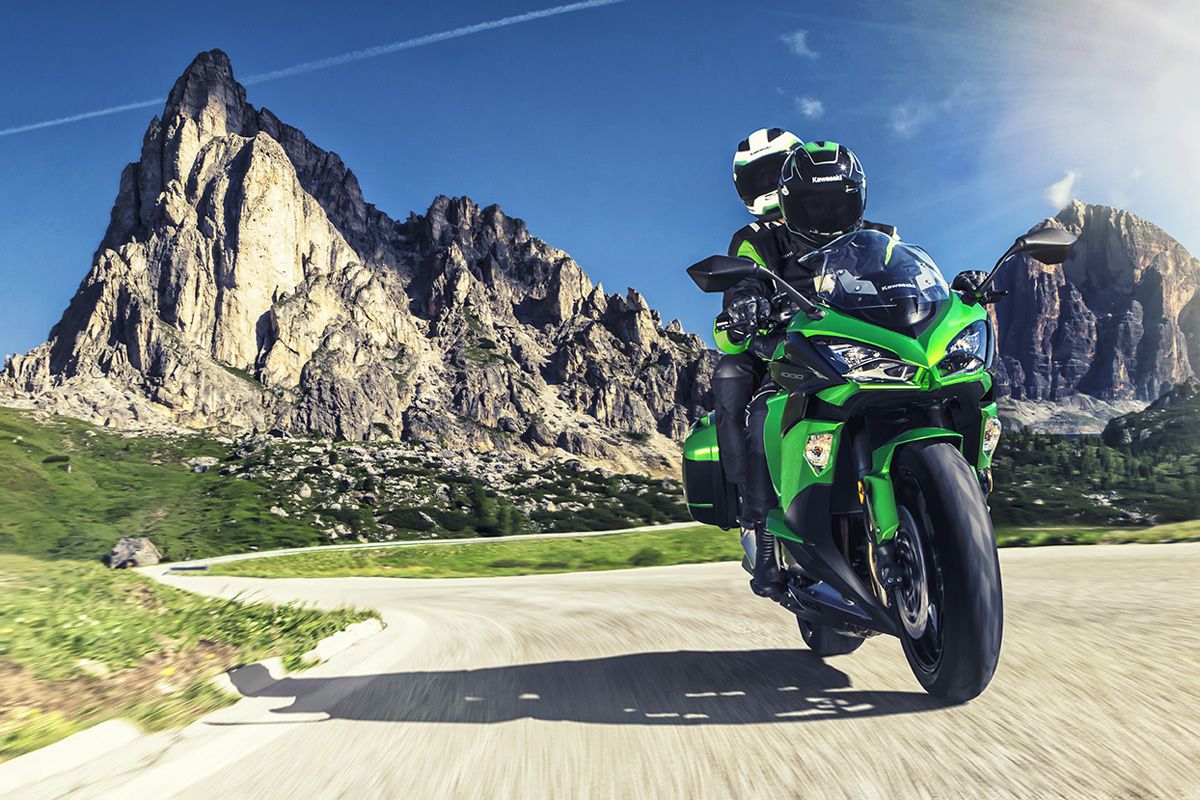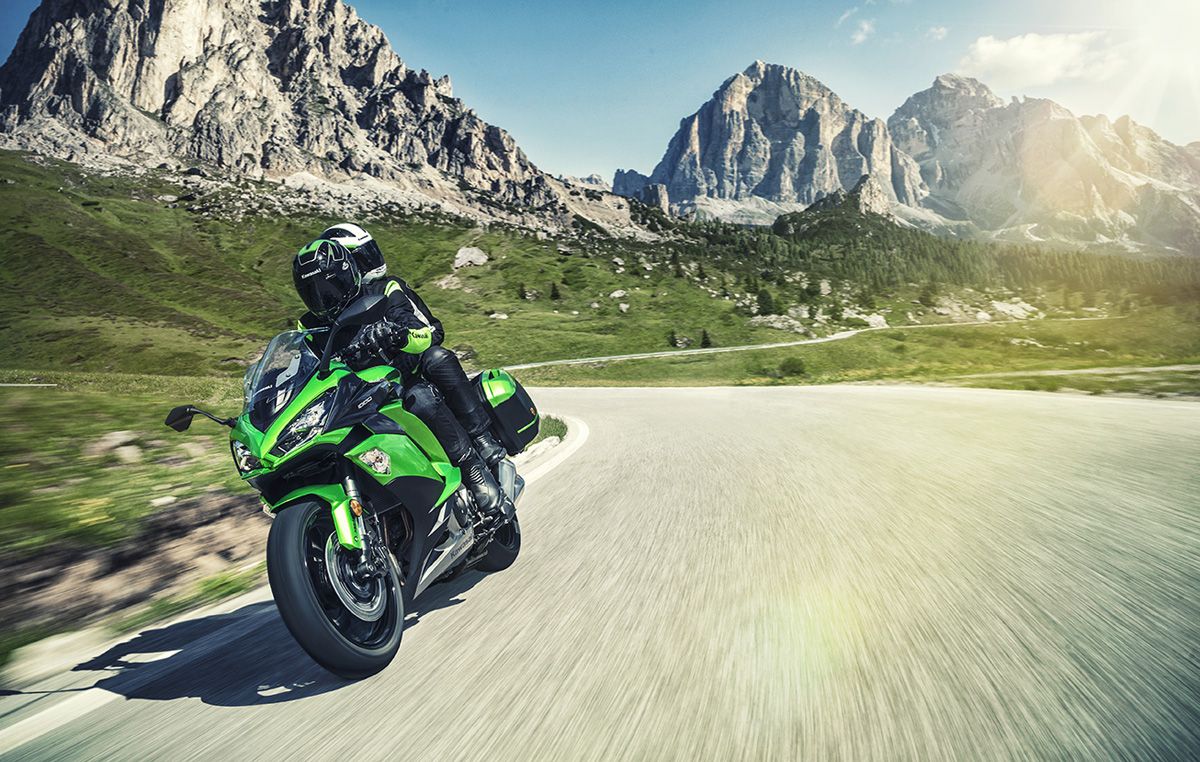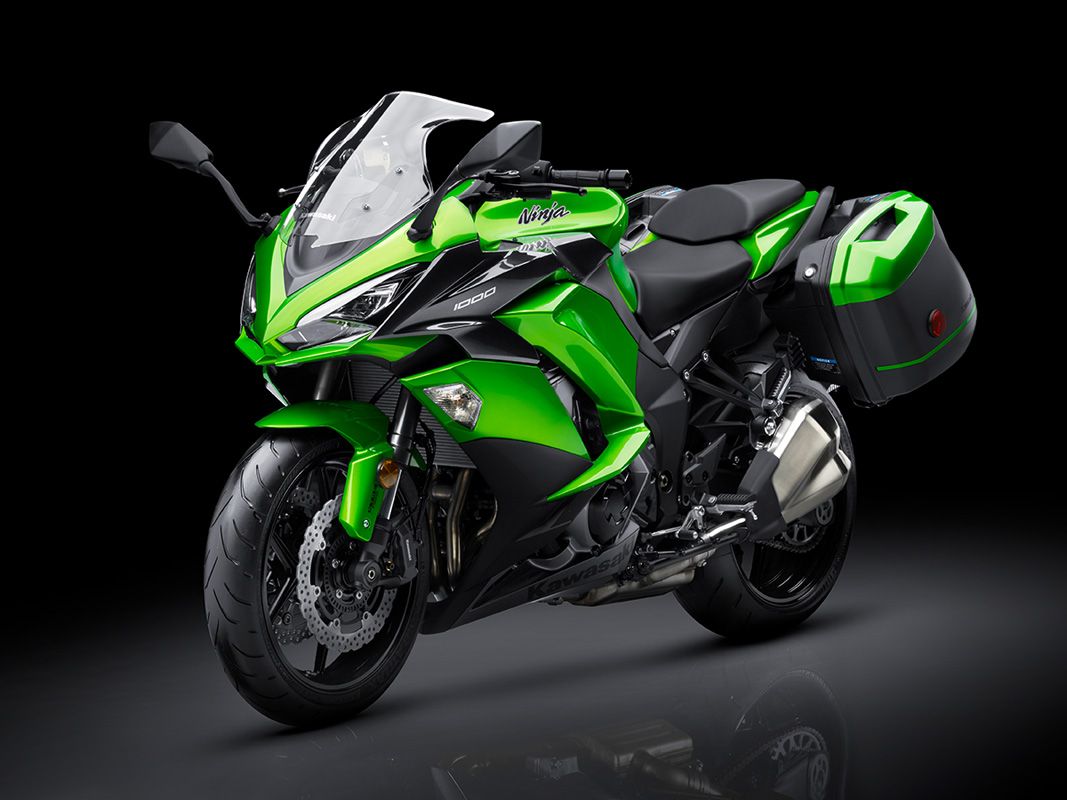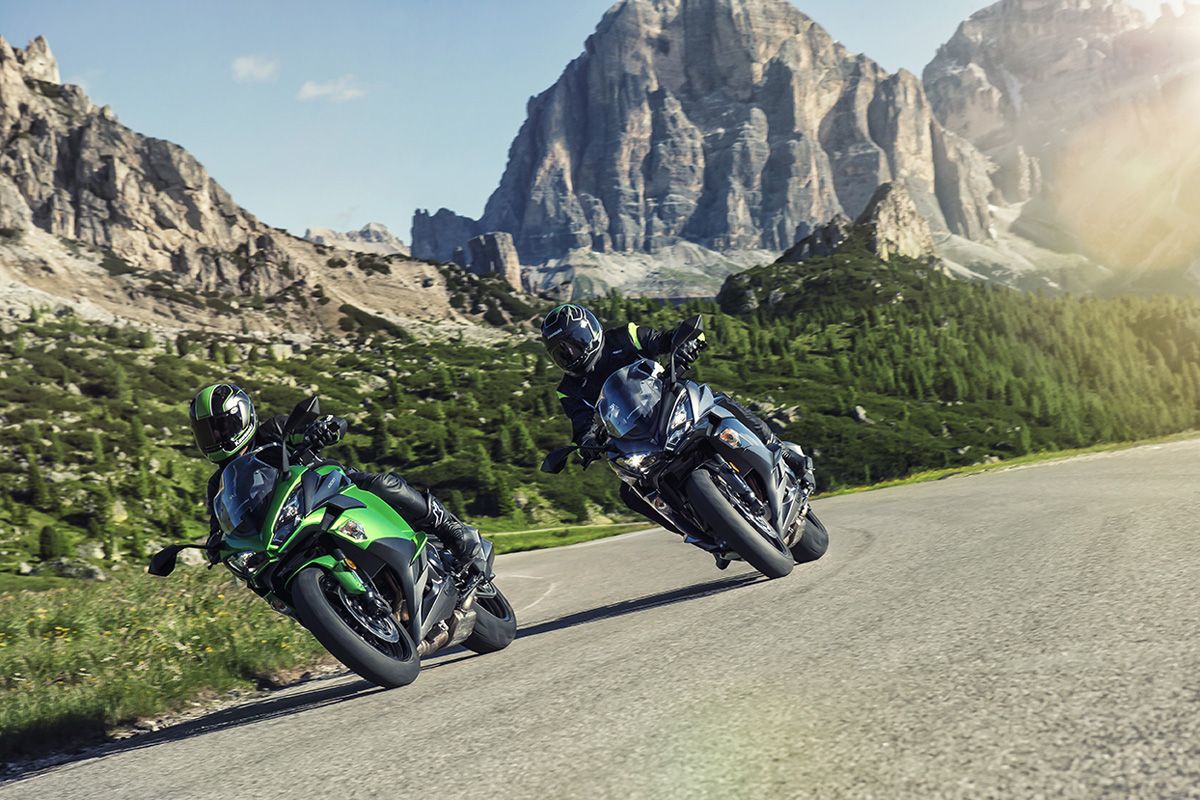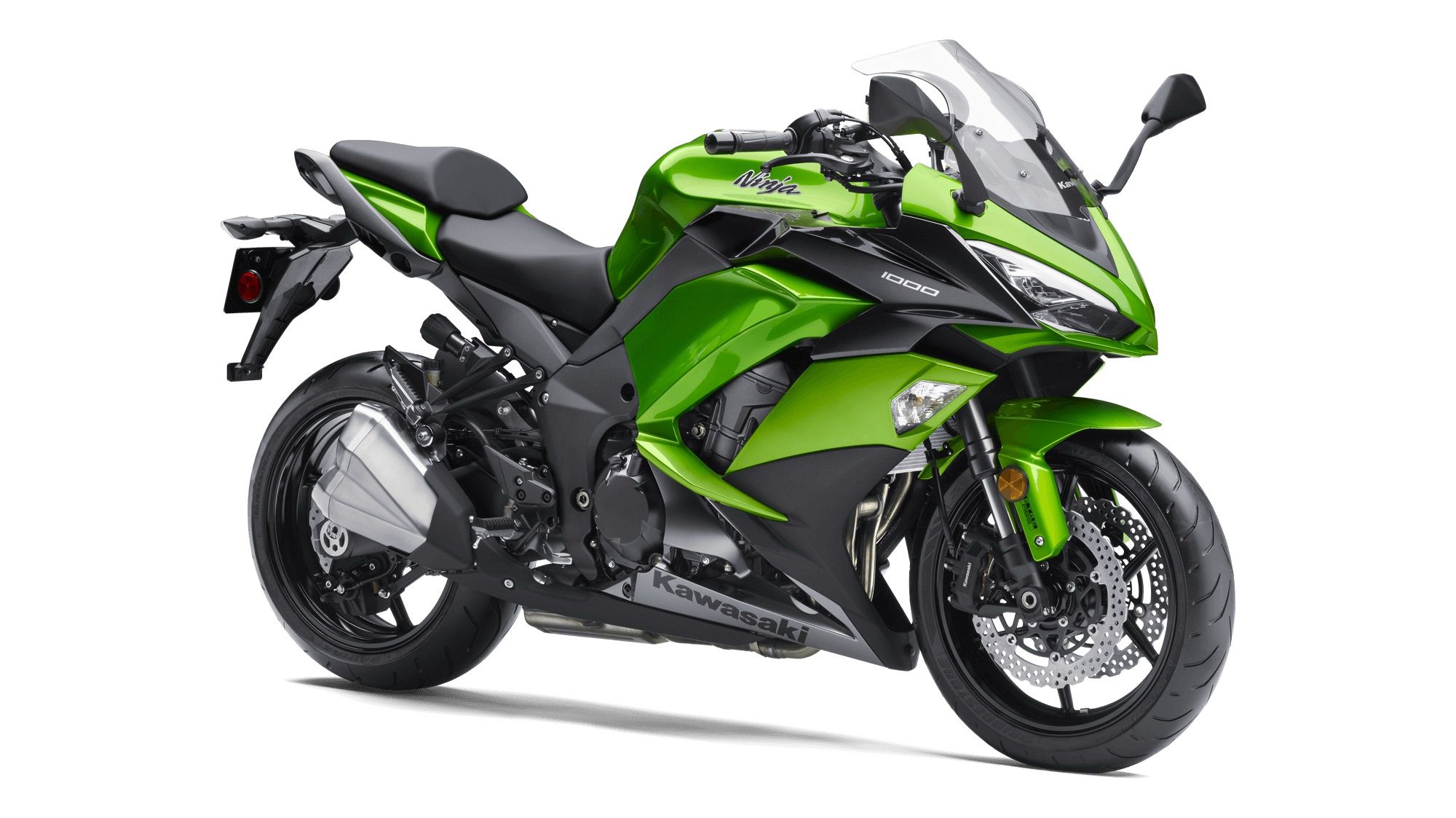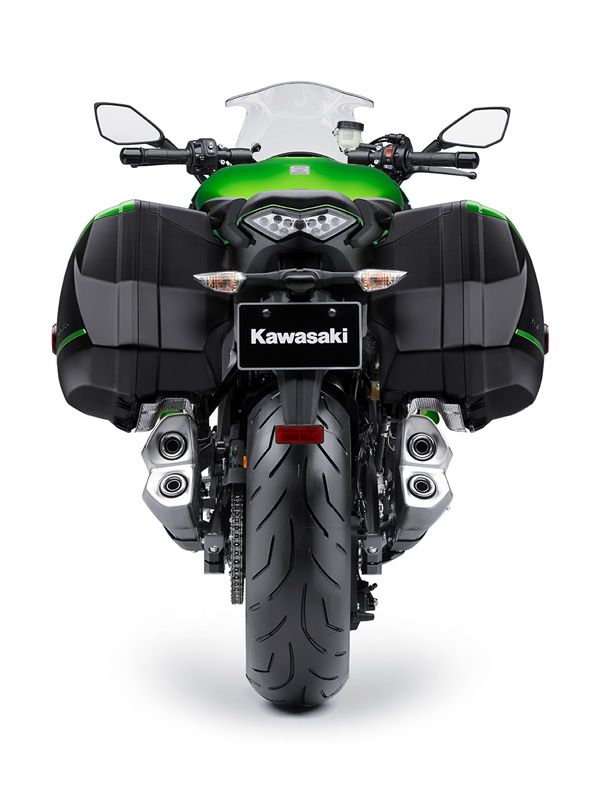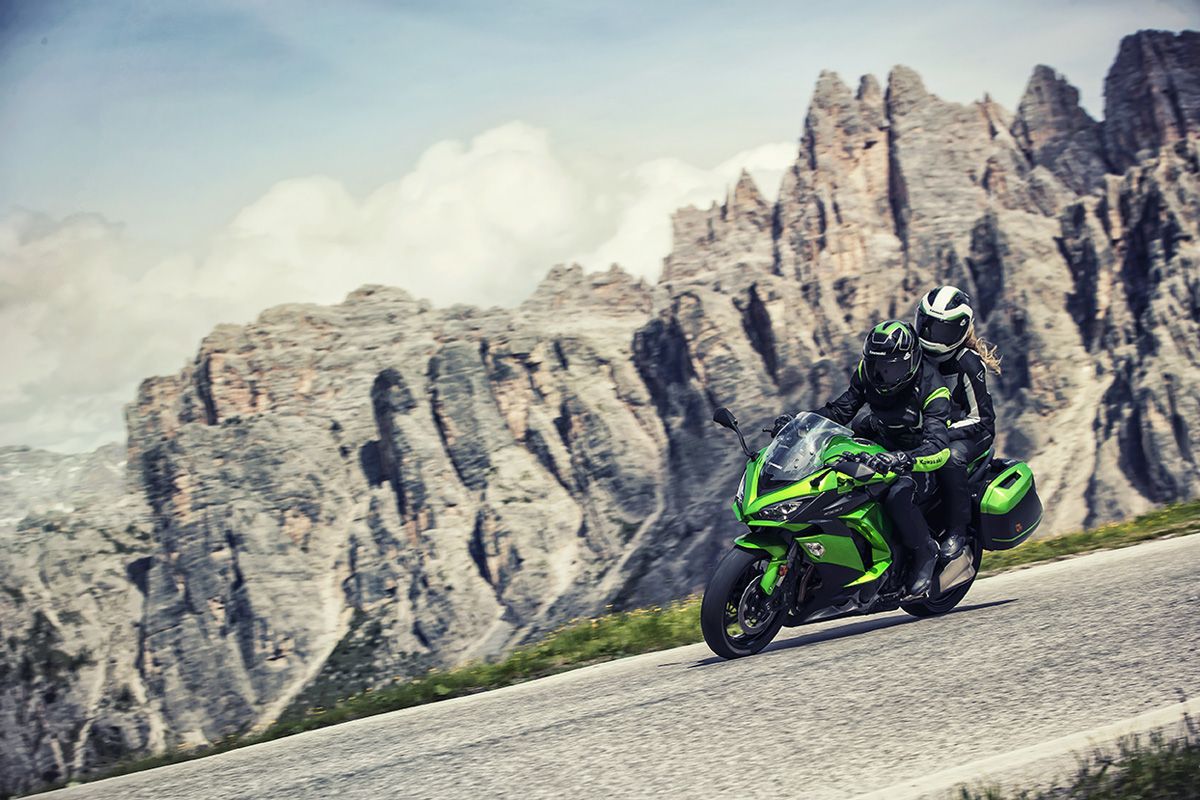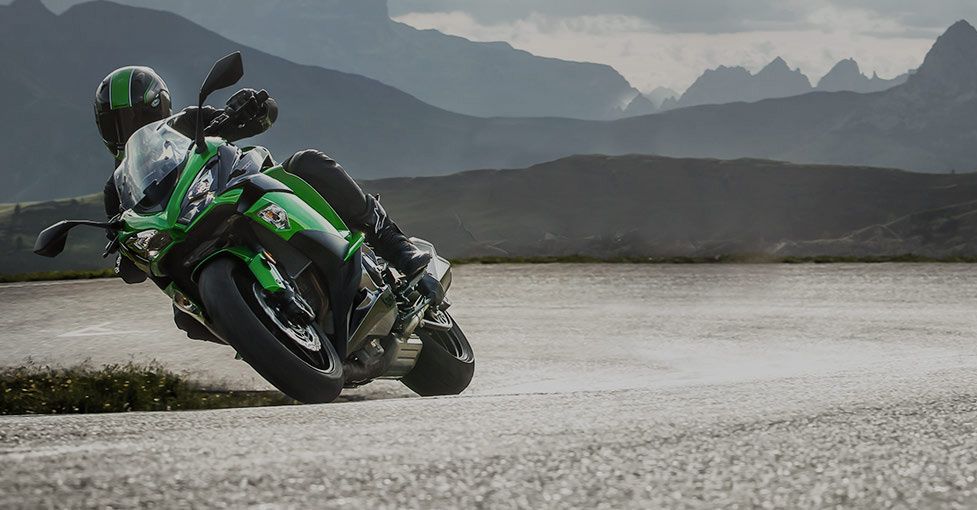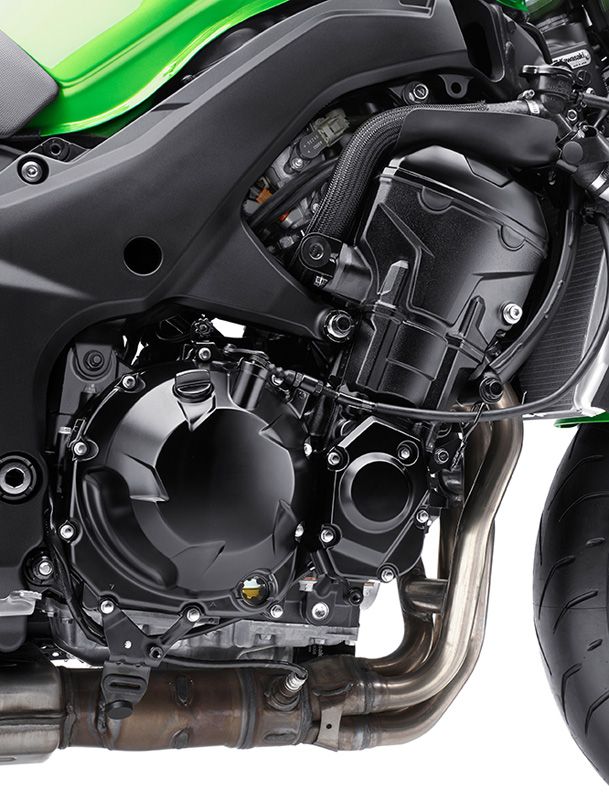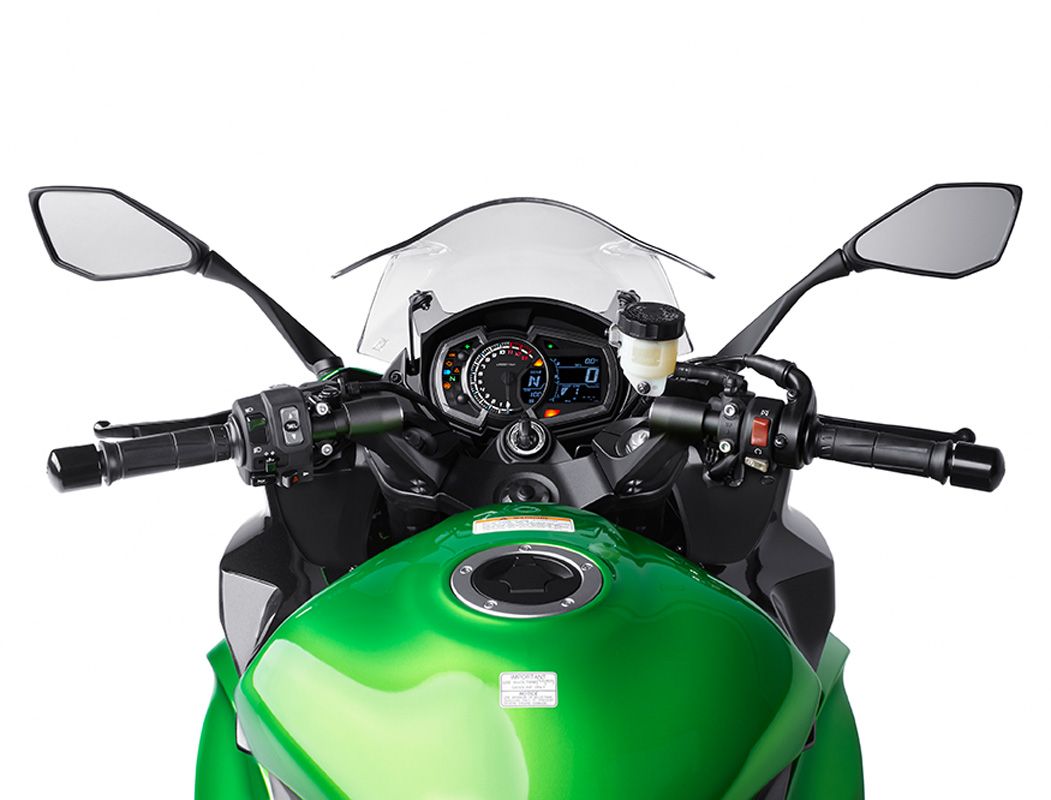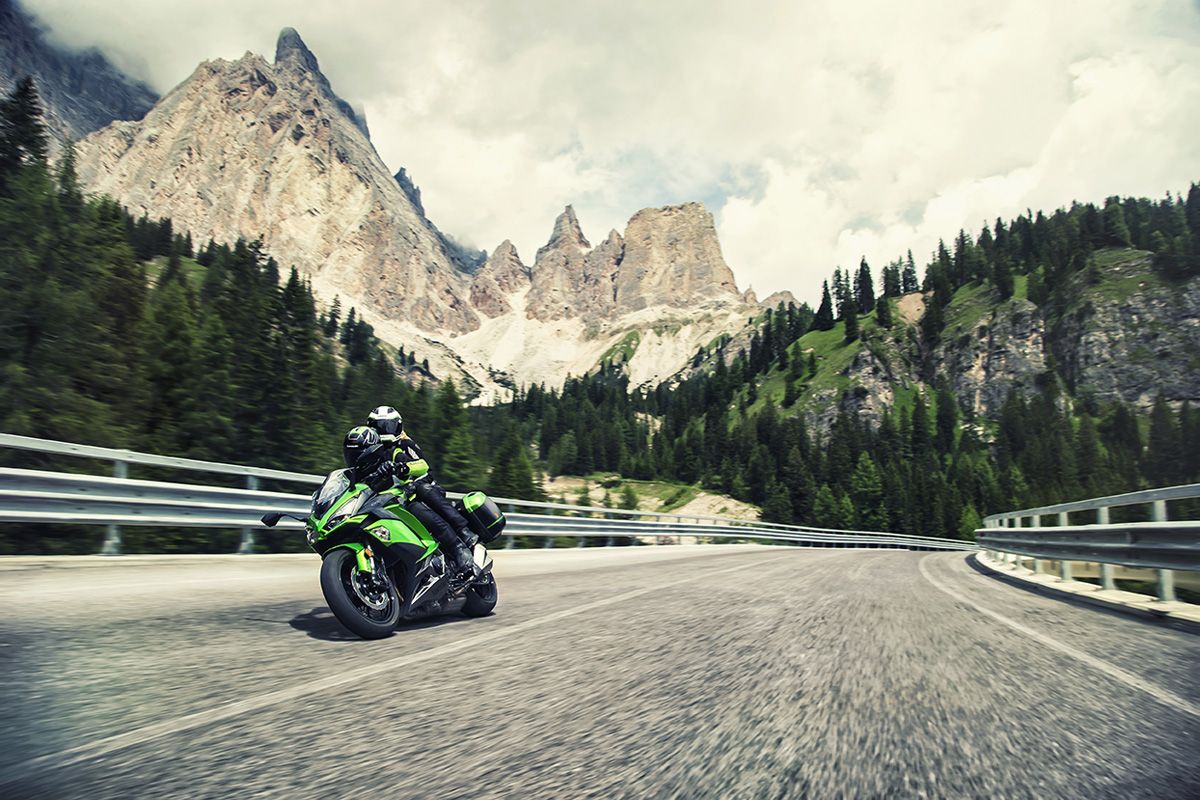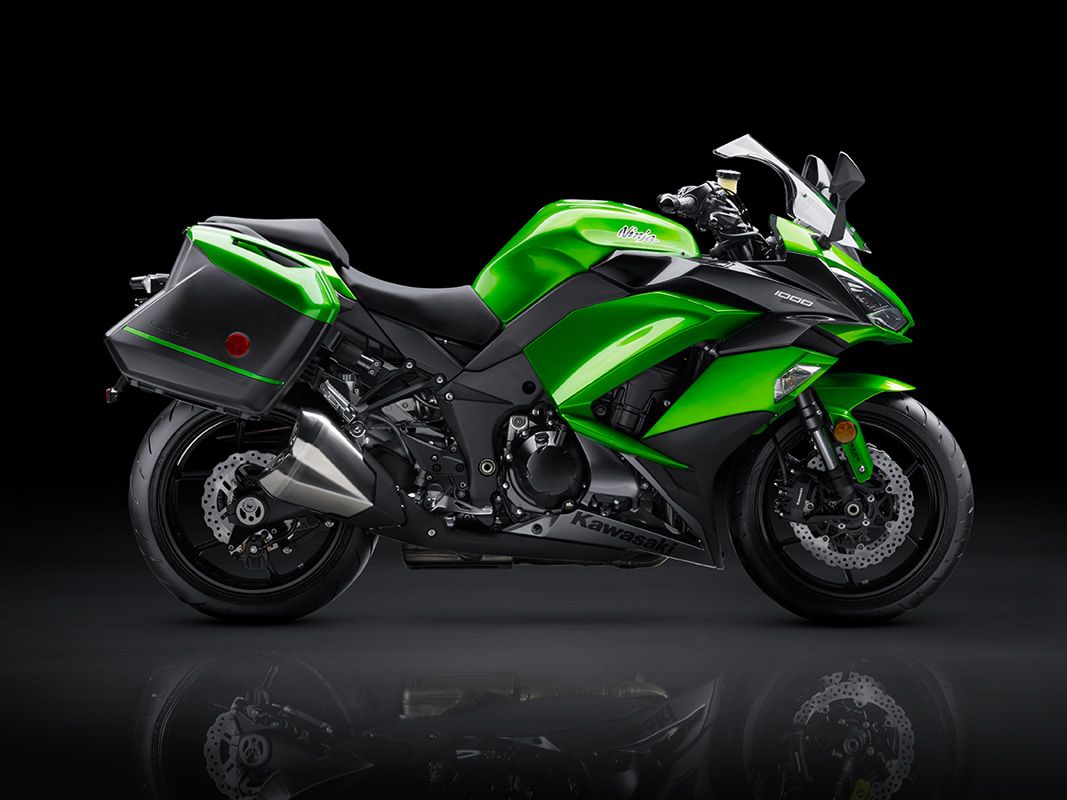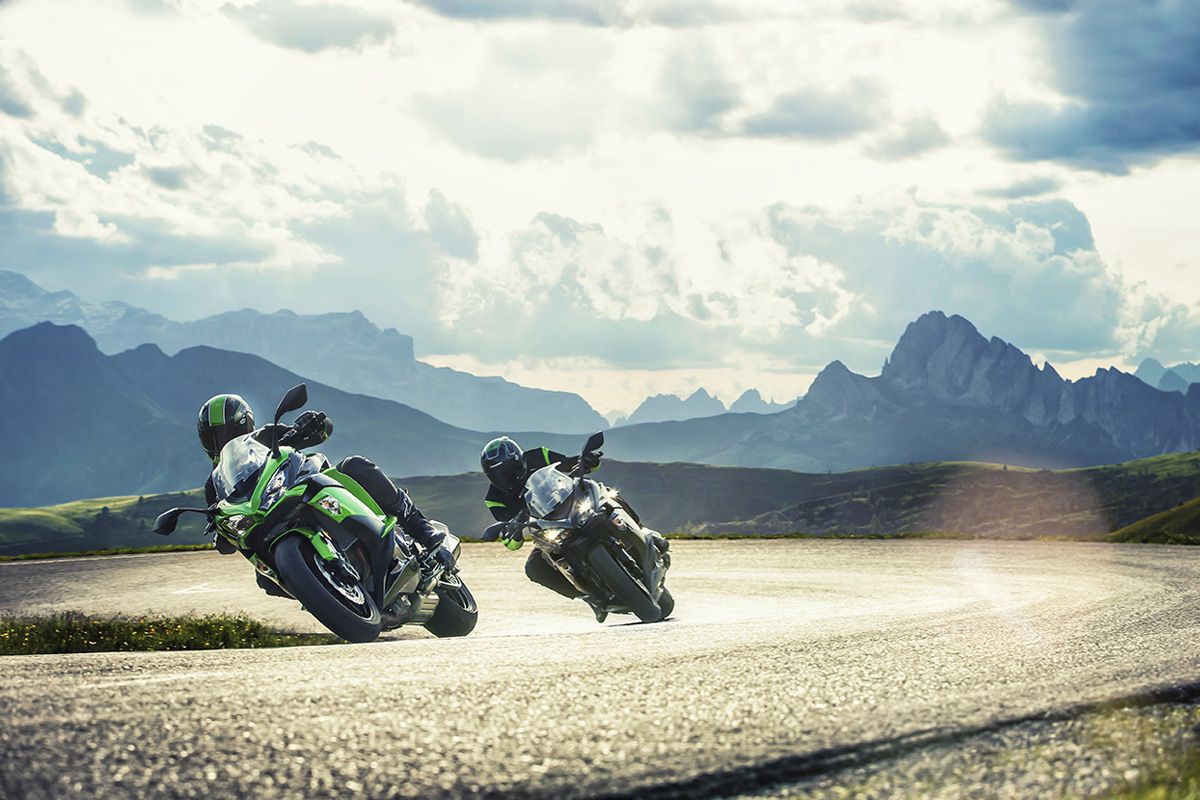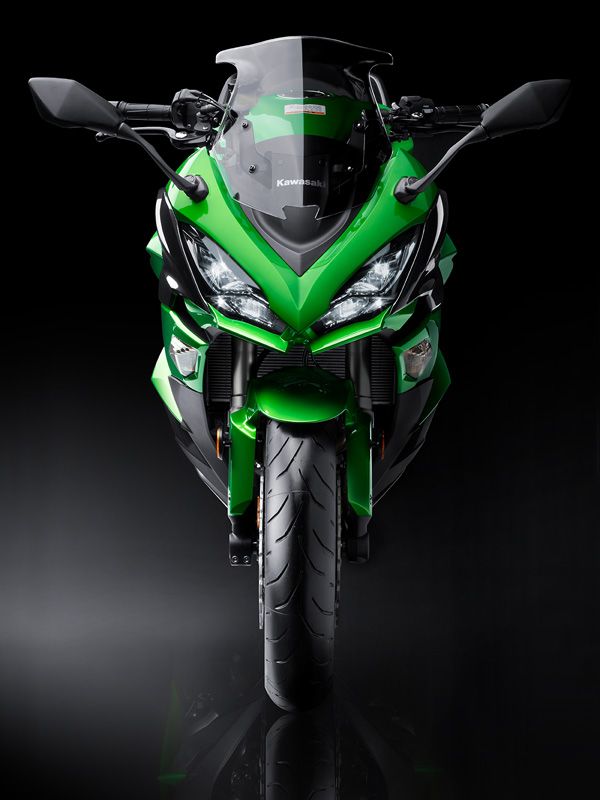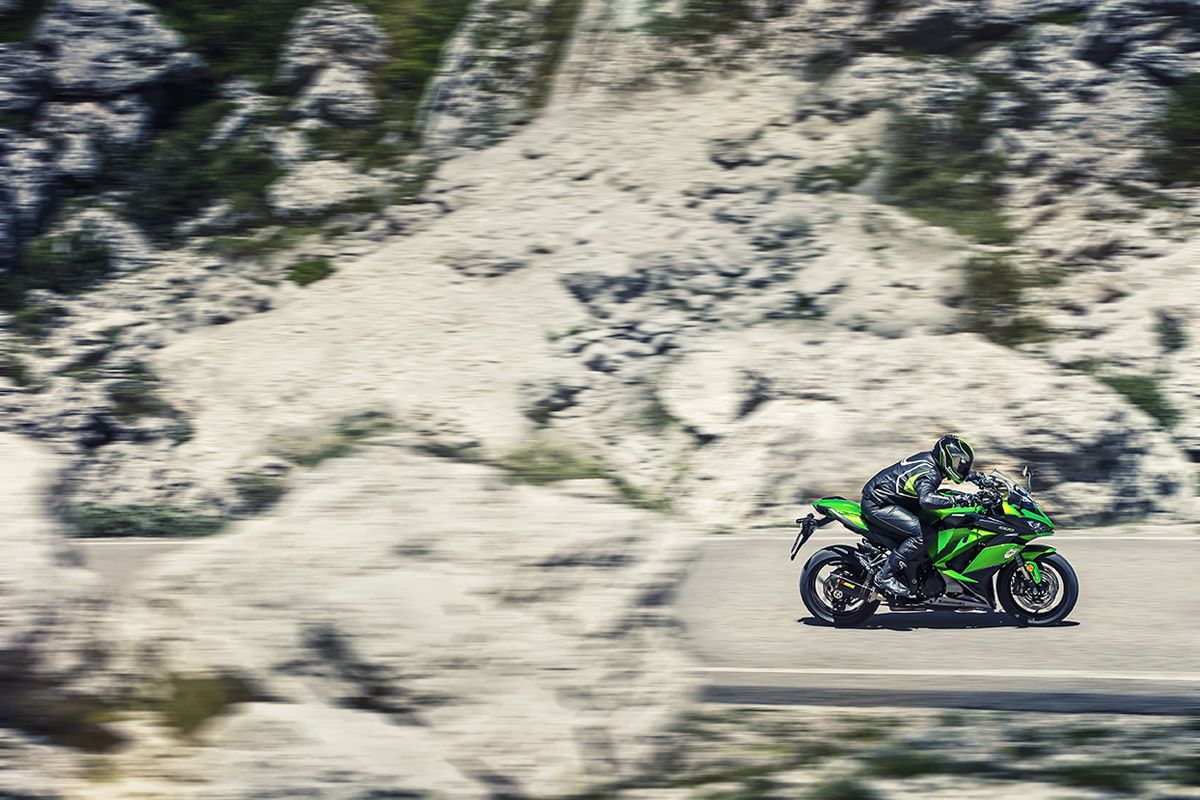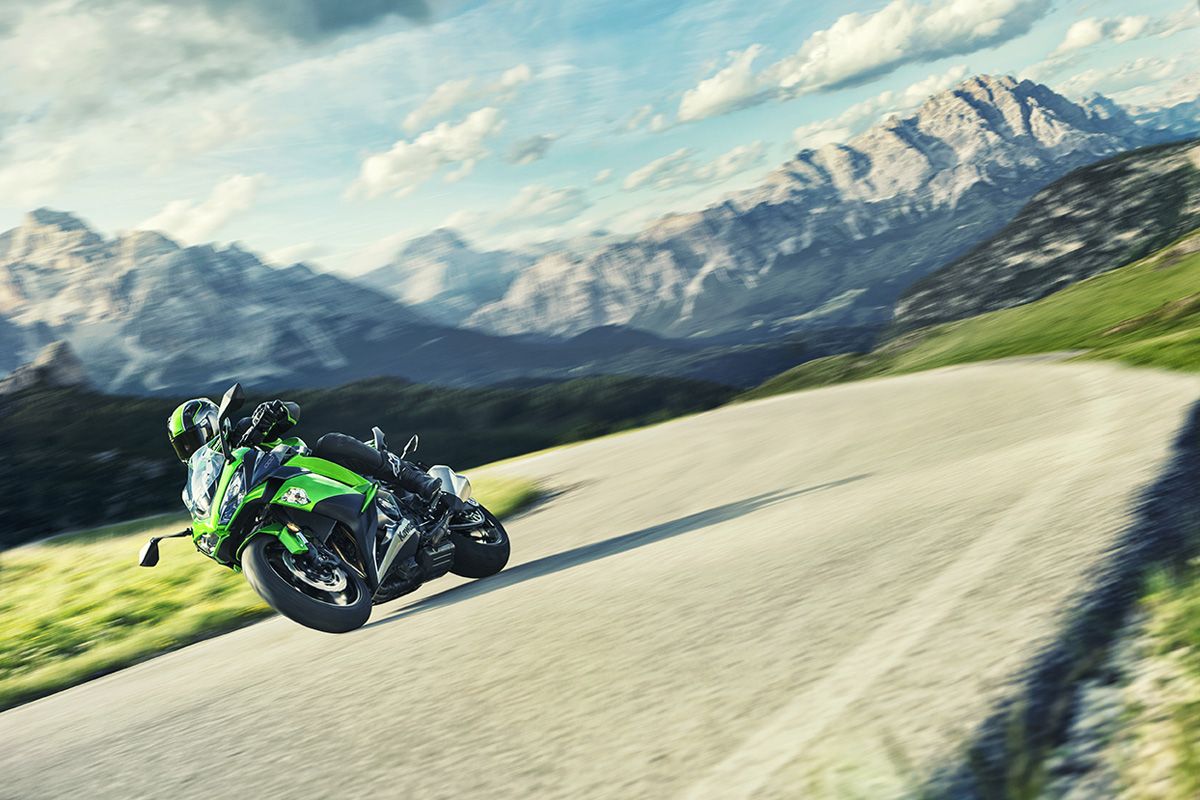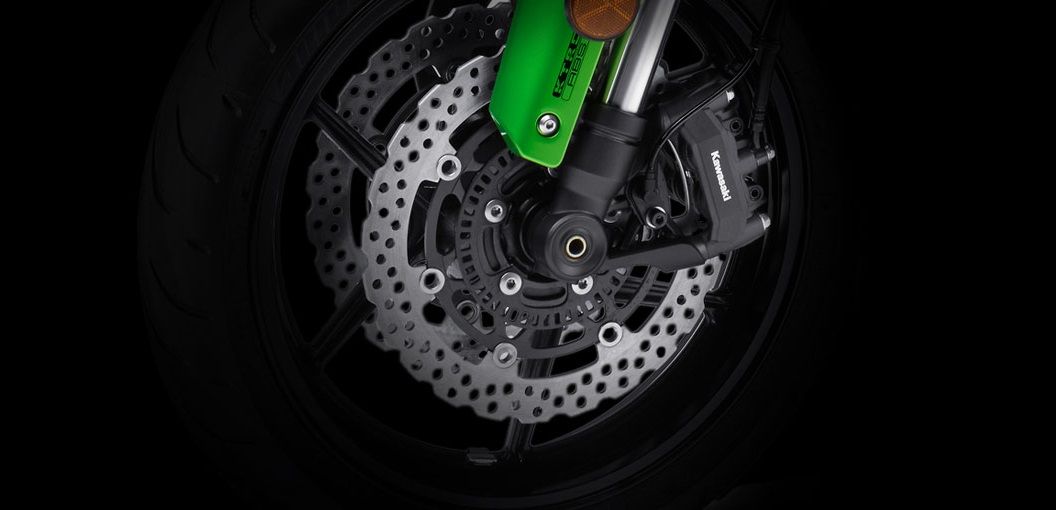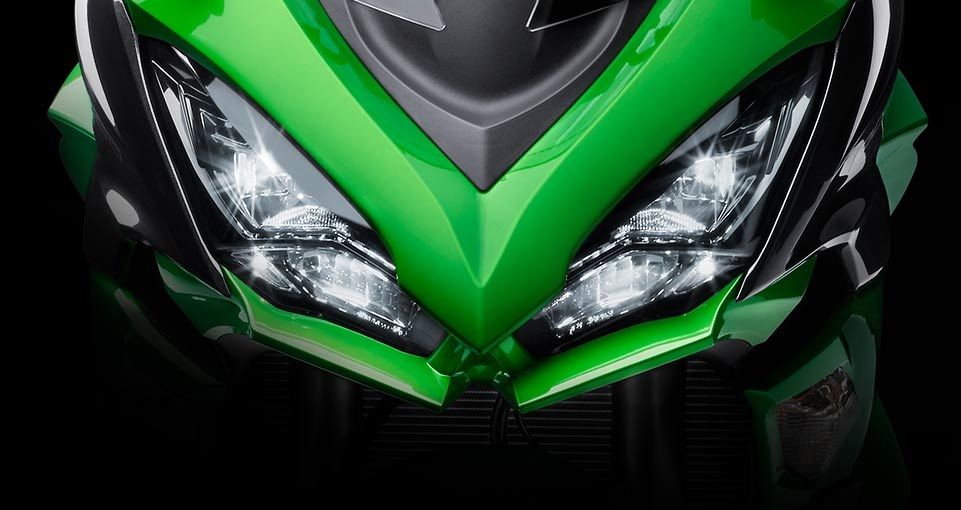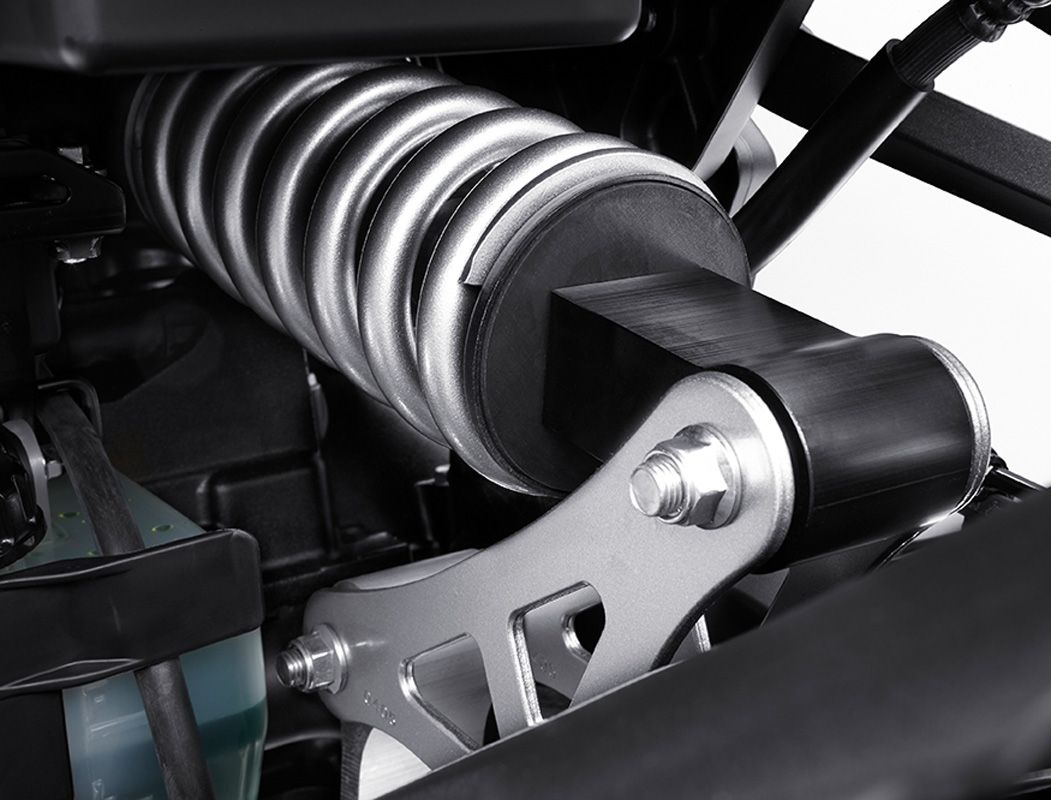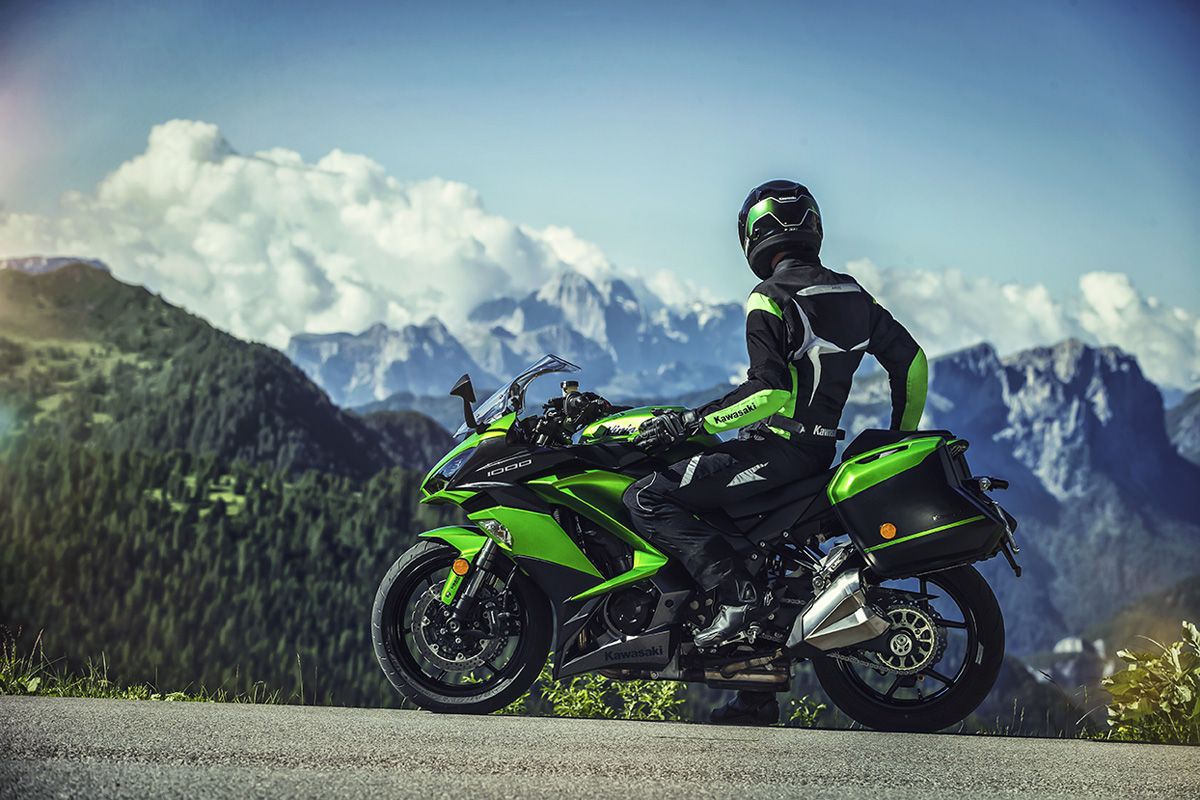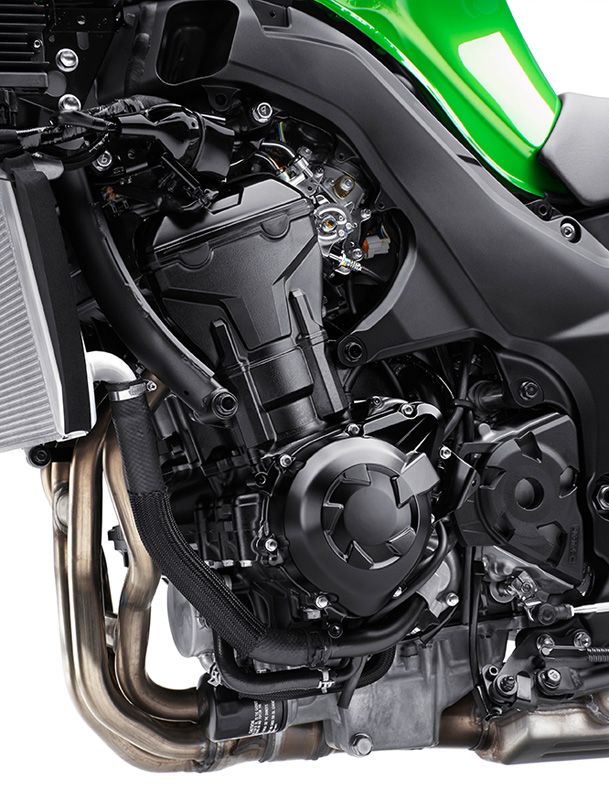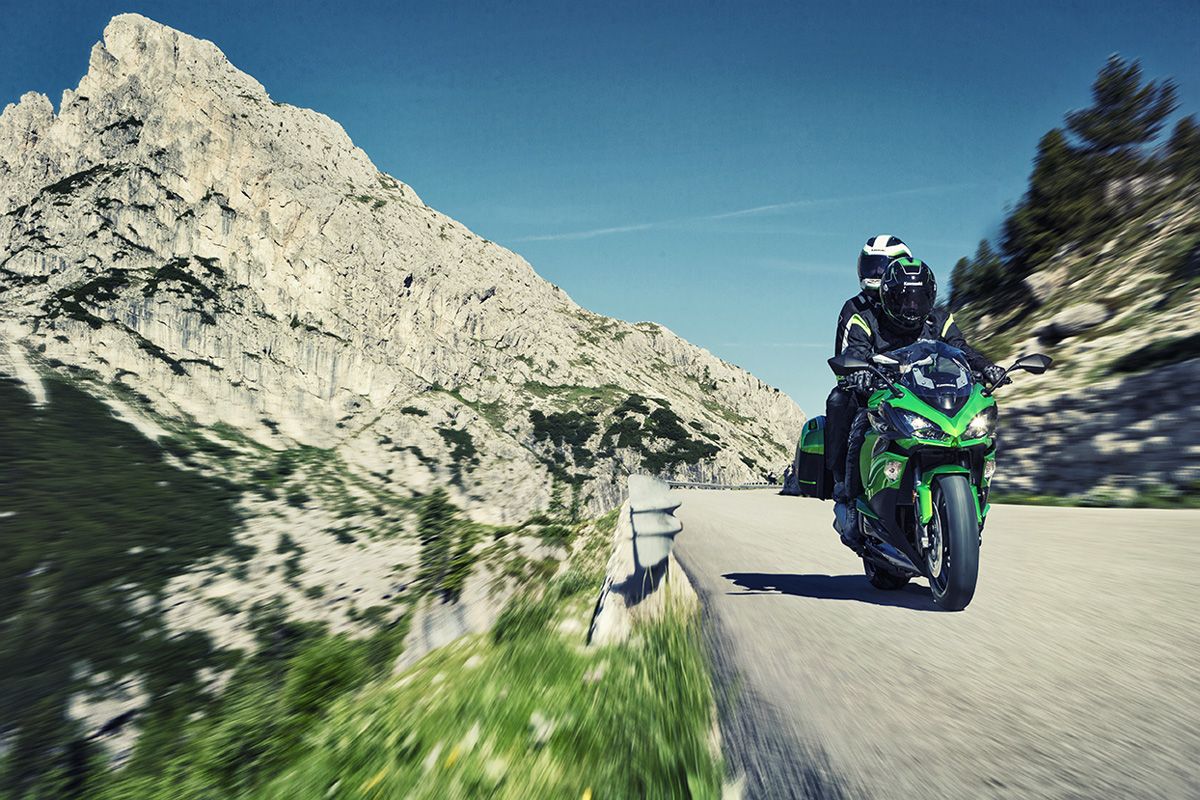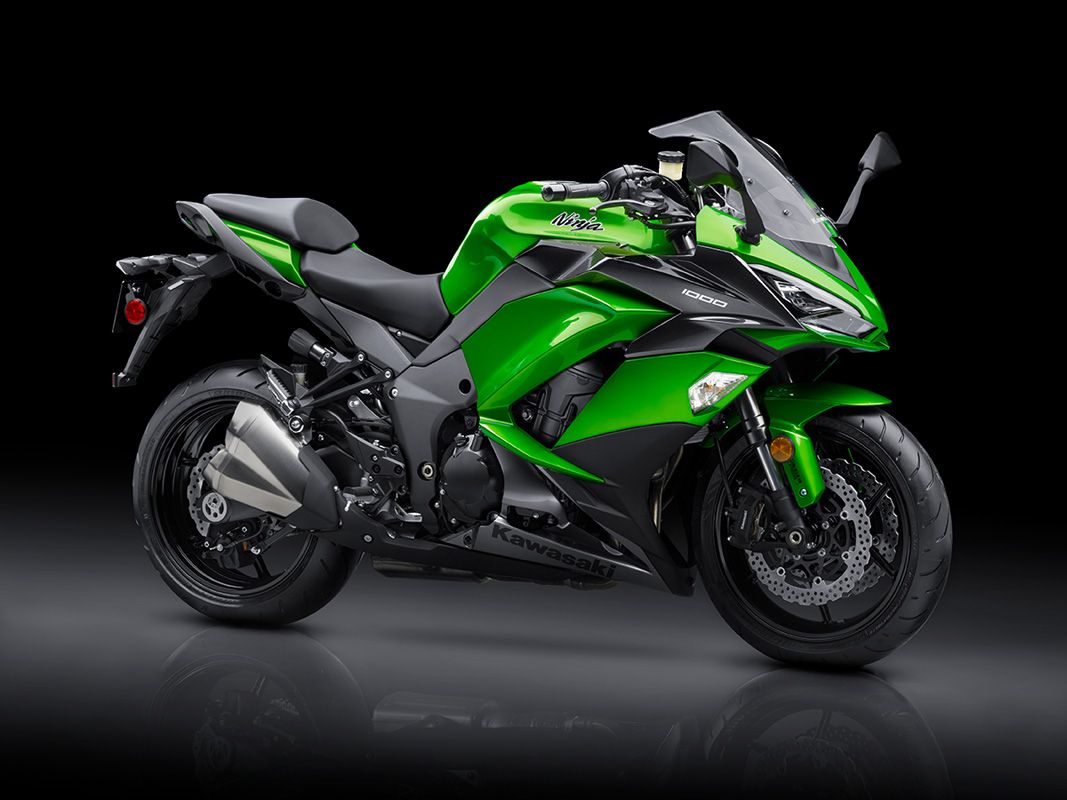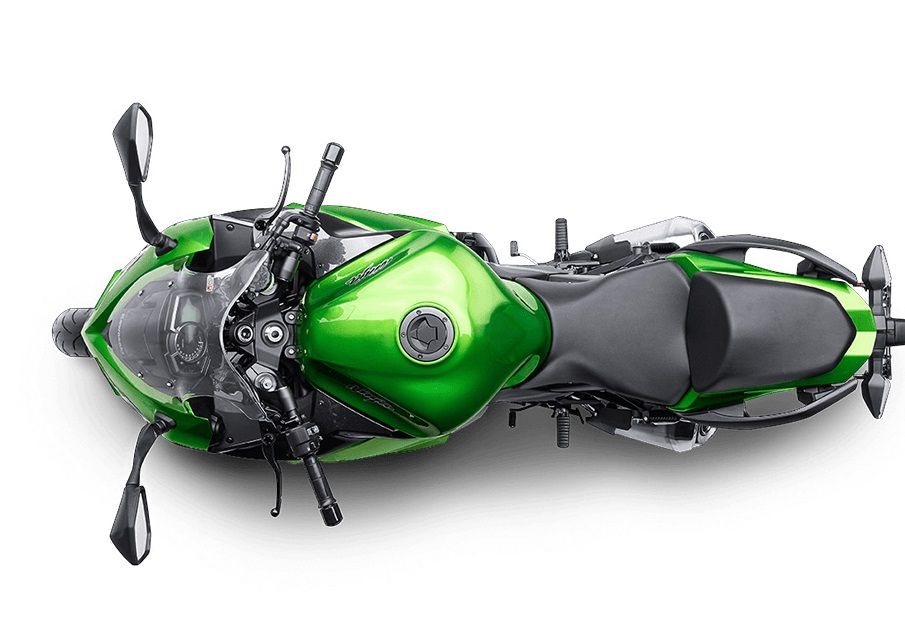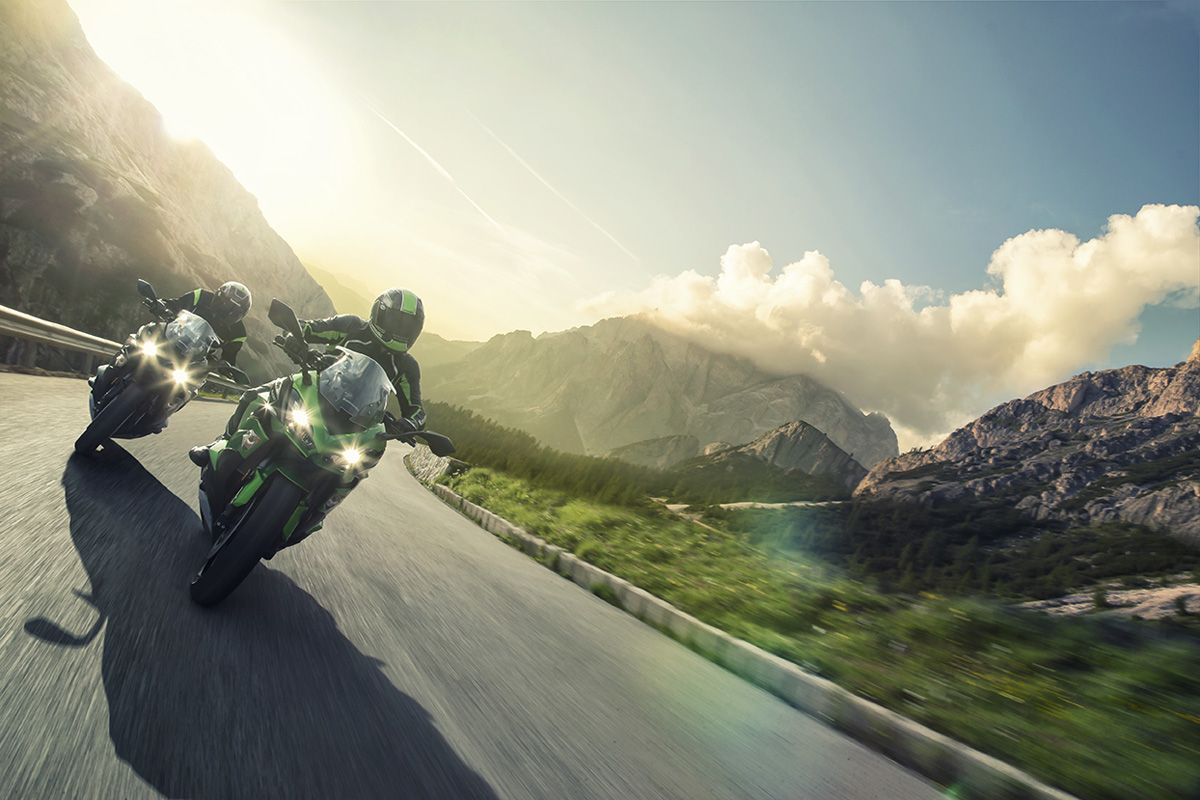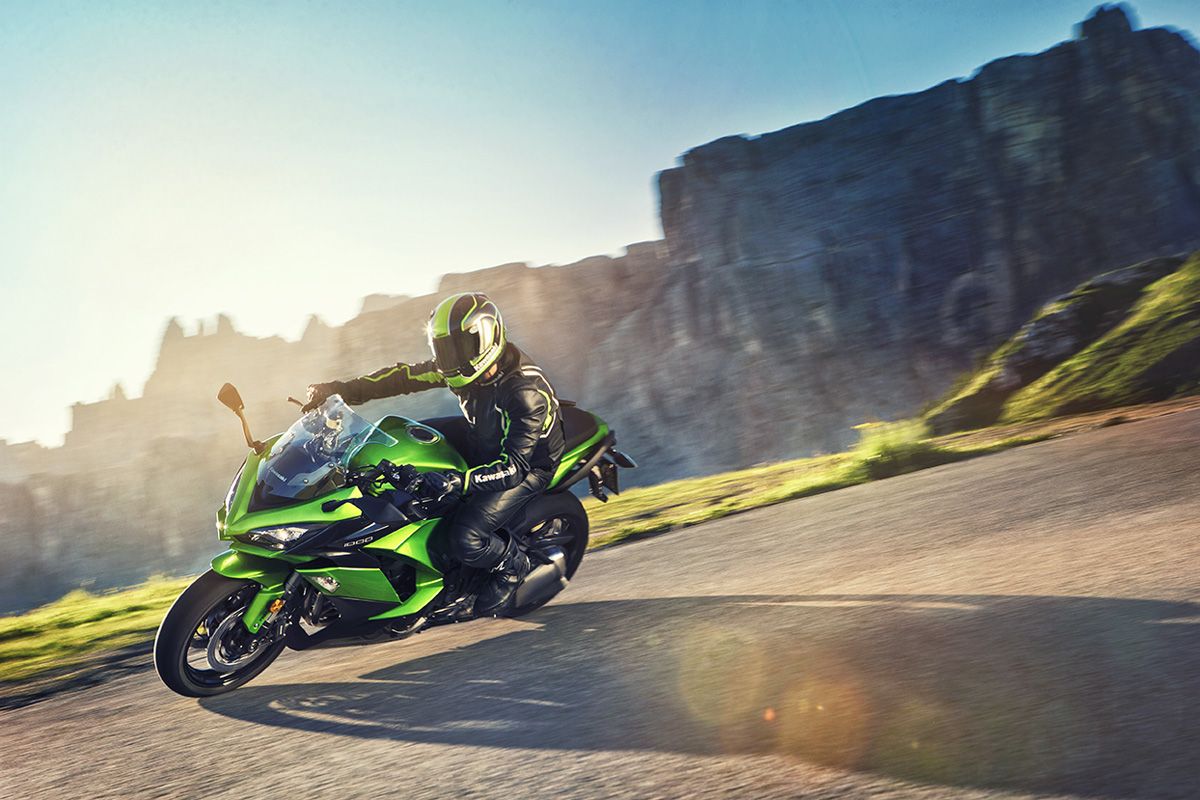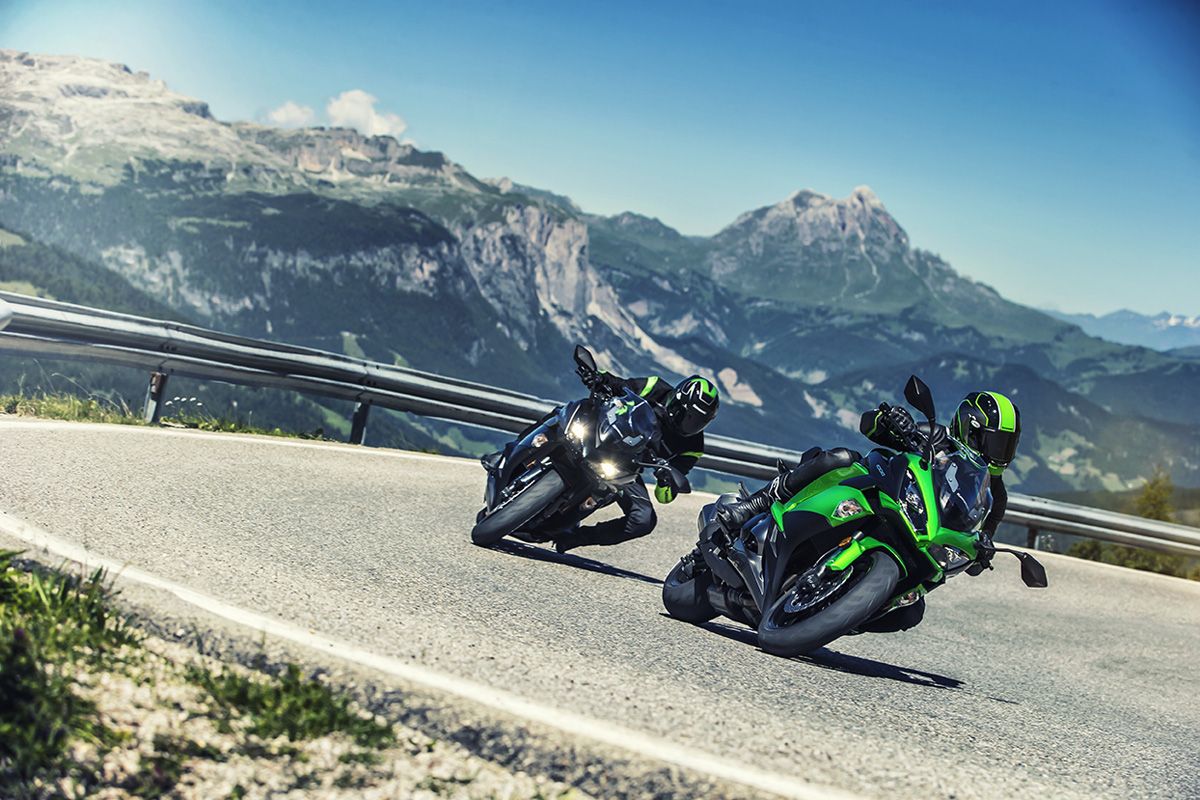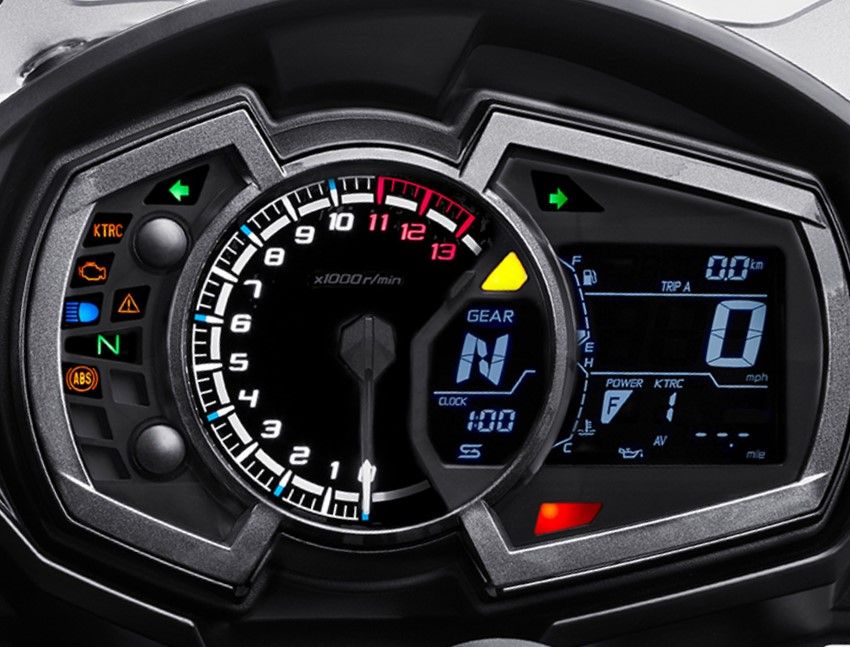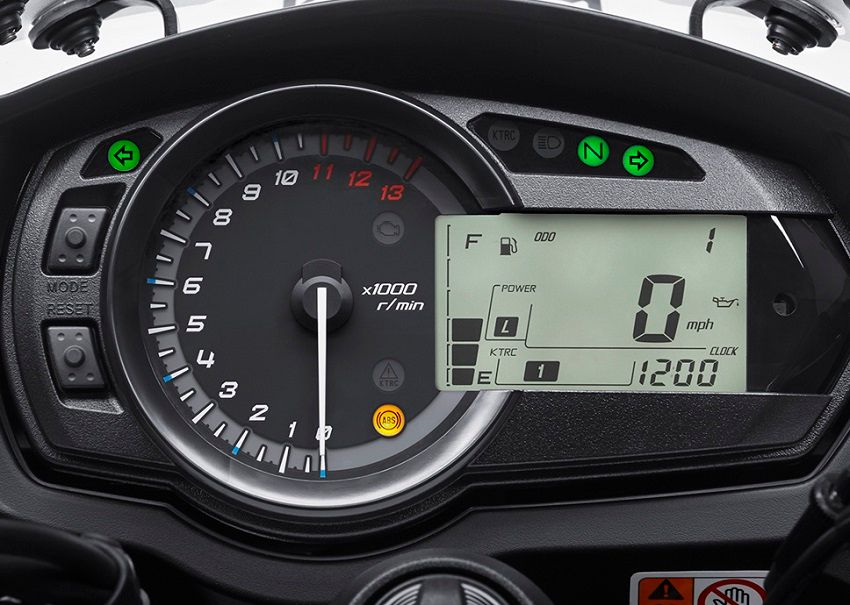Kawasaki->ke299 seems to have mastered the dark arts of slaying the competition in everything they put their hands in. Especially the way all their Ninjas' are up on the throats of every other faired motorcycle in their classes. Having diversified their skill sets in recent years, the fearsome Ninja brand got an upgrade on each of its models, with the latest one being this 2017 Ninja 1000. Basically, the sports bike which can hold a couple of bags on it and is a tad bit comfortable for longer stints.
The 2017 edition promises to be sportier and more eager to roar than the outgoing one to give you a competitive edge on those interstate highways and the streets. Like having the best of both worlds, this new bike takes on the pedigrees of the ZX-10R and the Concours brothers and puts them in a sought after package that leaves you with nothing to complain about. Here is our take on this new Green Machine:
2017 Kawasaki Ninja 1000
- Make: Array
- Model: 2017 Kawasaki Ninja 1000
- Engine/Motor: inline-4
- [do not use] Vehicle Model: Array
STYLING
|
|
ids=722866,722867 |
no_overlay=true> |
|
2016 Kawasaki Ninja 1000 |
2017 Kawasaki Ninja 1000 |
To start with, the Ninja 1000 was always the dressed up version of the Z1000 naked streetfighter. From a distance, you might feel that the new Ninja 1000 hasn’t undergone any change over the old one, but a closer inspection will reveal the minute changes which Kawasaki has carried out to lift up the appeal of the new version of its litre-class sports touring tool.
Having remodelled to keep pace with modern superbikes, the bike features all new characteristic traits with the aggressive new dual LED headlights to its new angle-adjustable screen and mirrors. The bodywork seems to be on steroids with focussed styling and sharp and minimalistic graphics to cash on its appeal as a track-honed superbike. A trait of every other machine in the Ninja family. With this, the folks at Kawasaki have toned down from the aggressiveness flair on the ZX-10R.
|
|
ids=722981,722980 |
no_overlay=true> |
|
2016 Instrument panel |
2017 Instrument panel |
The front cowl transforms into a chiselled and sharp unit with straighter creases rather than a curvaceous one to give a sportier outlook for the motorcycle. Similar to its pure Ninja elder cousins, the Ninja ZX 10R and the H2, this 1000 also features a new chin spoiler along with turn signals embedded within the bodywork. The rear-view mirrors also get a bigger and better functionality compared to the outgoing model.
The instrument cluster is brand new and is neatly tucked inside the fairings and looks futuristic with its combination of analogue and digital panels. The tachometer is a full-sweep dial with the speedo taking the digital route. For 2017, you get a gear position indicator, shift up indicator lamps, air temperature gauge as well as indicators for the IMU and KIBS. The LCD screen also gets a negative display for better readouts. The most interesting part of this new instrument panel is the tachometer’s needle that changes colour to indicate the rider-selectable shift-up timing that can also be switched off.
To help you have a hassle-free touring experience, the 2017 Ninja 1000 gets a new clean-mount side case system that allows Kawasaki’s accessory cases to be easily attached and easily removed atop the motorcycle. Also new for 2017 is the knockout DC power outlet near the instrument panel that can enable the rider to power his portable smartphones and devices on the go.
The rear is where you get to see more subtle changes with the newer wider seat and a split up pillion seat having greater cushioning for enhanced ride comfort. The pillion rear grip is also new and is easier to hold with their natural positioning. The exhaust canister gets a polished finish, and the rear tail lights and indicators are also new.
Overall Dimension
|
Make Model |
2017 Kawasaki Ninja 1000 ABS |
Suzuki GSX S1000F |
|
Length |
82.7 in |
83.3 in |
|
Width |
31.1 in |
31.3 in |
|
Height |
46.7 in |
45.1 in |
|
Wheelbase |
56.7 in |
57.5 in |
|
Seat height |
32.1 |
31.9 in |
|
Wet weight |
516 lb |
474 lb |
|
Fuel capacity |
5 gal |
4.5 gal |
POWERTRAIN
Apart from cosmetic changes carried out for the Ninja 1000, the basic powertrain of the motorcycle hasn’t undergone many changes. However, with inputs from the WSBK experiences, Kawasaki has updated the already potent 1043 cc engine with new ECU settings to uplift the performance package on the Ninja 1000.
On the Kawasaki Ninja 1000, the overall engine and gearbox combination has been carried forward - the engine is the same liquid cooled, inline four, 1043cc engine, as with the Z1000, which is coupled to a six-speed gearbox. This fuel injected motor pumps out a maximum power output of 140 bhp of power and a maximum torque rating of 82 ft.lb. The engine is linked to a modern exhaust system which features a 4-into-2-pre-chamber-into-2 layout.
Unlike the high-revving nature seen on the Z1000, most of the meat here lies in the lower range and mid-range of RPMs, which gives it the necessary credentials of stress-free performance and responsive feel of a typical sports tourer. Like all the Kawasaki mills, the Ninja 1000’s motor is also extremely refined and vibe-free even on the higher RPMs near the 11,000 redline, all thanks to revised engine settings that facilitate rider comfort and confidence.
The insides get a secondary balancer on the crankshaft to eliminate excessive vibrations, and the downward draft throttle bodies make the inflow of air into the engine with the shortest and fastest routing that helps a better low-mid power range. The bike comes equipped with Assist and Slipper clutch for nullifying rear wheel chatter caused by aggressive downshifting.
Engine Specification
|
Make Model |
2017 Kawasaki Ninja 1000 ABS |
Suzuki GSX S1000F |
|
Capacity cc |
1043 |
999 |
|
Bore/ Stroke in |
77/56 |
73.4/59 |
|
Output |
140 bhp @ 9,600 rpm |
144 bhp |
|
Torque |
82 lb-ft @ 8,800 rpm |
78 lb.-ft |
|
Type |
4-stroke, 4-cylinder, DOHC, 16-valve, Liquid-cooled |
4-stroke, liquid-cooled, 4-cylinder, DOHC |
|
Clutch type |
Wet multiplate with Assist and Slipper clutch |
Wet, multi-plate type |
|
Transmission |
6-speed, return shift |
6-speed constant mesh |
RIDE AND HANDLING
Yes, it is a sportsbike. There is no Ninja on the planet that isn’t one. But because it is aimed at being a semi-tourer of sorts, the Japanese honcho has given this 1000 a more approachable engine and ride settings, enabling it to munch miles for longer stretches of tarmac riding. The seating position is quite upright with the clip on laidback and raised handlebars and a neutral footrest position. This should accommodate a varied range of riding situations.
Adding do that, Kawasaki has given plush seats and padded pillion seat to avoid any chances of the passenger from sliding forwards, and the seats also get underside dampers to soften out any vibrations that could come through them. Increasing comfort levels, the Kawa gets a new taller double-bubble windshield that can be adjustable to the rider’s preference and debuting for the first time, the 5-way adjustable clutch lever can be set to suit the size of the rider’s hands. More reasons to buy this machine.
The engineers decided to give the Ninja 1000 with a narrower throttle body that eventually made a sleeker engine design to be able to accommodate slimmer overall profile of the motorcycle. This gives the rider a good amount of space for leg movements especially while cornering on bends and curves on the road. Using the engine as a stressed member, they have been able to centralise the mass of the vehicle in optimum positions for sharp handling, neutral steering and a light turn-in.
Suspension duties are taken up by beefy 41 mm USD forks upfront that come with stepless compression and rebound damping and spring preload adjustability. They are set to contribute easy performance levels on the streets and the hills alike. The rear has a shock linkage to the swingarm that comes with remote preload adjuster to suit weight fluctuations when luggage and riding preferences come into the picture.
Like before, the motorcycle gets dual 300mm petal disc brakes at front and a single 250mm disc brake at the rear, which gets the assistance of what they call as “KIBS” ABS that constantly monitors calliper hydraulic pressure for the optimum stopping power for all riding conditions. This system also facilitates a minimal kickback during extreme braking conditions that prevent rear lifts and back-torque.
Talking about electronics, this Japanese Green machine gets loads of it, all borrowed from the company’s WSBK stints. As expected, the new Ninja 1000, for the first time, gets the same list of electronic aids and ECU tunings as that of the Ninja ZX-10R. It includes a Bosch IMU that inputs 6 degrees of freedom to enable precise chassis orientation, corner management function, 3 level Kawasaki traction control mode (KTRC) and three levels of riding modes, all of which work efficiently in making the riding as well as braking experience a bit more engaging than the outgoing model.
Of course, one can switch off all those electronic rider aids to change the "Gentleman Sportbike" to the athletic counterpart with twitchy vigorous power surges of all 140 barking horses.
Chassis Specifications
|
Make Model |
2017 Kawasaki Ninja 1000 ABS |
Suzuki GSX S1000F |
|
Frame |
Aluminium backbone |
Twin-spar aluminium perimeter frame |
|
Suspension / Front |
41mm inverted cartridge fork with stepless compression and rebound damping, adjustable spring preload |
Inverted telescopic, coil spring, oil damped |
|
Suspension / Rear |
Horizontal monoshock with stepless rebound damping, remotely adjustable spring preload |
Link type, single shock, coil spring, oil damped |
|
Brakes / Front |
Dual 300mm petal-type rotors with radial-mount 4-piston monobloc callipers and ABS |
Brembo 4-piston, Disc, Twin |
|
Brakes / Rear |
Single 250mm petal-type rotor with single-piston calliper and ABS |
Nissin, 1-piston, Disc single |
|
Tyres / Front |
120/70 ZR17 |
120/70ZR17M/C (58W) |
|
Tyres / Rear |
190/50 ZR17 |
190/50ZR17M/C (73W) |
PRICE
The 2017 Kawasaki Ninja 1000 fetches a cool $12,199 MSRP and is available on showroom floors since March 2017. Candy Lime Green / Metallic Graphite Gray and Metallic Spark Black / Metallic Graphite Gray are the only two colour options available. And you get 12 Month Limited Warranty.
You can also make your Ninja 1000 more personalised with a full range of Kawasaki Genuine Accessories to make it as unique as you want it to be. The accessories include different seats, seat cowl, frame sliders, tank bag and tail bag. There is no cruise control and heated grips are a $289.95 option.
|
Make Model |
2017 Kawasaki Ninja 1000 ABS |
Suzuki GSX S1000F |
|
MSRP |
$12,199 |
$11,299 |
COMPETITION
Much like the Ninja 1000, the GSX S1000F too shares much from both its naked counterpart, the GSX 1000, as well as its supersport sibling, the GSX 1000 R. Out of the two motorcycles, the Kawasaki Ninja 1000 definitely looks more tempting, muscular and likeable.
Suzuki GSX S1000F
To start with, the overall design of the Suzuki GSX S1000F is striking – but in a good way or bad, that depends on your perception. That being said, the visual appeal of the GSX S1000F may not be universally acceptable, due to its unconventional and ‘out of the box’ styling. But that may be its plus point as well, as the motorcycle looks like nothing in the category of sports tourers.
Alongside the name, the Suzuki GSX S1000F also shares its core heart with the naked streetfighter GSX S1000. This means that the GSX S1000F sources its thrust from the four-stroke, four-cylinder, fuel-injected, liquid-cooled, 999cc engine, which has a peak power rating of 144 bhp. Paired to a 6-speed gearbox, the engine is ultra-refined in a typical Suzuki manner, and has a linear power delivery to keep up with its touring credentials.
Other than the 999cc engine, the GSX S1000F retains other mechanical hardware such as frame, suspension and brakes from the GSX S1000. The bike is equipped with a set of inverted hydraulic telescopic forks at the front and link type hydraulic monoshock at the rear. Braking duties are taken care by dual discs at the front and a single disc at the rear, along with the Anti-lock Braking System (ABS). The three-mode traction control on the GSX S1000F further enhances its usability in varying conditions, thus making it an easier bike to tame for the amateur riders as well – a big plus in its favour.
With this, the GSX S1000F now becomes the most affordable fully faired superbike from Suzuki at MSRP $11299, positioned below both the GSX R1000 and the Hayabusa. The GSX S1000F is offered in two colours – Metallic Triton Blue and Glass Sparkle Black with Candy Daring Red.
VERDICT
Kawasaki has left no stone unturned in improving its standards, the efforts of which can be sensed in this latest iteration of the motorcycle, the new Ninja 1000 ABS. Though the changes are very limited, as a periodic update, this has to be termed as quite praise-worthy, which explains the seriousness of Kawasaki towards modern engineering on two wheels.
With their bikes dominating the WSBK championships, we can see the direct impact of this on their street products. With the integration of technology and electronics from their motorsport experience, the Ninja 1000 has continuously pushed for better handling, improved comforts and a thrilling riding experience along with ground-breaking technology catering to the rider’s needs.
For 2017, the aura of the motorcycle remains the same, and with the addition of a chiselled bodywork and LED lights, the bike boasts of flair and poise. It’s always been the case with the 1000 where it offered motorcyclists a viable option, who found the Ninja ZX-10R a bit too hard-core for their riding preferences. With the dual intention of effortlessly covering up long miles of the highways as well as being a practical superbike, Kawasaki has the right tool to get on top of the charts in the sports-touring class.
The manufacturer has managed to improve the motorcycle in every aspect – be it performance, dynamics and electronics. With the new Ninja 1000, Kawasaki has really spiced up the game, and it is only going to lift the standards and benchmarks in the litre class sports-touring segment to new heights. And we have none doubts whatsoever.
Where the ZX-10R is a "look I've arrived" guy, the Ninja 1000 is more of an "enjoy the ride" kind of a guy.

